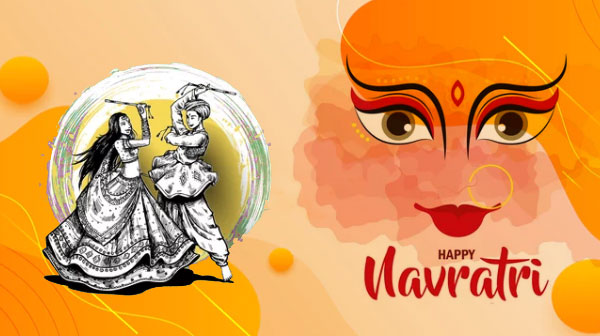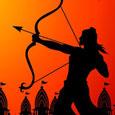Navratri Celebration Around India
Almost every Indian celebrates this festival with utmost vigour and zeal. It’s a nine day long festival celebrated with many cultural as well social gatherings. This festival is not only restricted to particular region or locale but India celebrates this festival in harmony and integrity. But the mode of celebration differs according to different regions and culture. Know more about how pan India celebrate this festival with different colour and vigour.
Navratri Celebrations
The nine days and nights of Navratri are dedicated to Mother Goddess. The celebrations of the festival include fasts, strictly vegetarian diet, Japa (chanting mantras in honor of the Goddess Shakti) and recitation of religious hymns, prayer, meditation and sacred texts related to Goddess Durga. Navratri is celebrated twice a year - once in the month of Chaitra (April-May) and again in the month of Ashwin (September-October). On both the occasions, nine different forms of Goddess Durga are worshipped. In the September-October celebrations, the main rituals consist of placing images of the Goddess in homes and temples. On the tenth day, the idol is immersed in water. Numerous other celebrations are also associated with Navratri festival. Let us know more about the celebrations of Navratri.
Bengal
All Hindus celebrate Navratri festival at the same time in different ways in different parts of India as well as around the world. During Navratri, Bengalis mostly in the eastern part of India celebrate the last four days of Navratri better known as Durga Puja. Huge idols of the Goddess Shakti in the form Goddess Durga is being worshiped throughout Bengal. It is celebrated with gaiety and devotion through public ceremonies of “Sarbojanin Puja” or community worship. Huge decorative temporary structures called “pandals” are constructed to house the earthen icons of Goddess Durga, accompanied by those of Lakshmi, Saraswati, Ganesha and Kartikya. Under these ‘pandals’ grand prayer services take place followed by mass feeding, and cultural functions.During these four day celebrations, many customs and rituals are performed. Some prevalent rituals amongst them are worshiping pre-pubescent young girls, known as 'kanyas', as they are considered to be embodiments of Goddess Durga.. 'Ayudha Puja' is performed on the ninth day, where one worships the tools, implements of their livelihood and places it on the altar of the Goddess for her blessings of success and prosperity. One dominant feature which one gets to witness throughout this four day span is offering of “Anjali” or showering Mother Goddess with flowers. On the fifth day or the tenth day of the festivity, the beautifully crafted earthen idols are immersed in the river. Finally ends the ceremony of Durga Puja with observance of BijoyaDashami or touching elder’s feet and seeking elder’s blessings.
Gujarat
Navratri is more of a community event in Gujarat, where people perform devotional songs and dances that are popular by the names of 'DandiyaRaas' and 'GarbaRaas', and observe Jaagran (waking through the night), to please the Goddess. Navratri is celebrated throughout Gujarat in three ways: at Mataji's temples, in individual households and at public places in every city, town and villages by thousands of people - men, women and children - through drumbeats, dance and dandy (wooden lacquered sticks). While ritualistic aspect predominates the first two modes of celebration, social and cultural aspects are visible vibrantly in the last. The Amba Mata Temple at Junagarh, Gujarat, is a favorite pilgrim for devotees, during Navratri. Here, the Garbo, which is a perforated earthen pot with a lighted lamp within, is placed around which brightly dressed women, men and children move singing and playing a folk dance called garba. This earthen pot is a symbol of the human body and the lighten lamp inside signifies the divine soul Moving around a circle in a Garba indicates the never ending cycle of creation, maintenance and destruction phases of the supreme reality.
Maharashtra
Navratri here is celebrated in a slightly different form, than the other states of India. Here Navratri are dedicated to Goddess Durga while the Vijayadashami (the tenth day) is dedicated to Saraswati, the goddess of knowledge. This day is also considered auspicious to begin any education, buy new assets, start new ventures, and weddings. Puja is performed on each day of Navratri and devotees offer the flower garland to the idol or image of the goddess Durga. In Mumbai, people visit various temples including the Ayyappa Temple at Goregaon.
Kashmir
In Kashmir, Hindu minorities of Kashmiri Pandits celebrate this festival. Devotees observe fast for nine days and stay on water and fruits or eat the food specifically made for the fast, only in the evening. They usually visit the temple of their guardian goddess KheerBhawani, on all nine days of Navratri. Aarti is held on the last day of Navratri at the temple and it is only after which, people break their fast. Many devotees also go to the mountain cave of the Vaishno Devi Temple, during Navratri to seek the blessing of the Goddess.
Kerala
People of Kerala celebrate this festival with a difference.On the day of Durgashtami, a ceremonial occasion is performed in the evening. And owing to this ceremony any work related to studies are suspended and books are kept away. Beaten rice, roasted paddy (malar), jaggery, fruits and so on are offered to Saraswati, while worshipping the Goddess of wisdom in the next day called Mahanavami. Thus mahanavami is dedicated to Goddess of knowledgeSaraswati. On this day of Saraswati Puja, children aged 3 to 5 years are taken to the temples where they are introduced with the alphabets before the image of Goddess of learning and speech. They are made to write for the first alphabets on the sand or rice.On the tenth day of Navratri, also known as Dussehra, an effigy of Ravana is burnt and crackers are burst to celebrate the triumph of good (Rama) over evil. Thousands of devotees also visit the Saraswati temple at Kottayam, to take a dip in the mysterious holy pond. People also visit the famous temples at Thekkegram (Palghat).
Mysore, Tamil Nadu, Karnataka & Andhra Pradesh
During Navratri, devotees of Mysore worship their royal deity Chamundi, who is considered to be the epitome of Mysore royalty. This festival is observed with grandeur and pageantry. According to tradition, a magnificent procession of elephants, horses, chariots and costumed attendants is observed on the tenth day,when Maharaja goes to worship the hilltop temple of the goddess. In Tamil Nadu, Karnataka and Andhra Pradesh, women arrange 'BommaiKolu', “bommai” means dolls and “Kolu” means displaying. Thus accordingly dolls decorated with flowers and ornaments, are placed specially on a specially prepared steps. Generally the steps are in odd numbers. The first few steps are filled with dolls of deities. The next couple of steps are dedicated to various religious saints of the world. The next consecutive steps are filled with wooden that reveals the talent of the lady of the house. The last step is generally done by the little children and comprise of their toys and small theme works.During this period, nine young 'kanyas' or virgins are offered new clothes and sweets. The married women share flowers, kumkum and snacks among themselves.Thus the festival is a social cum religious affair. People from all walks of life interact with each other exchanging sweets and gifts. The victory of good over evil is the bottom line of the festival. Till date it has been followed with grand success.

Looking for Something? Search Google :

 Ram Navami
Ram Navami Passover
Passover Good Morning
Good Morning